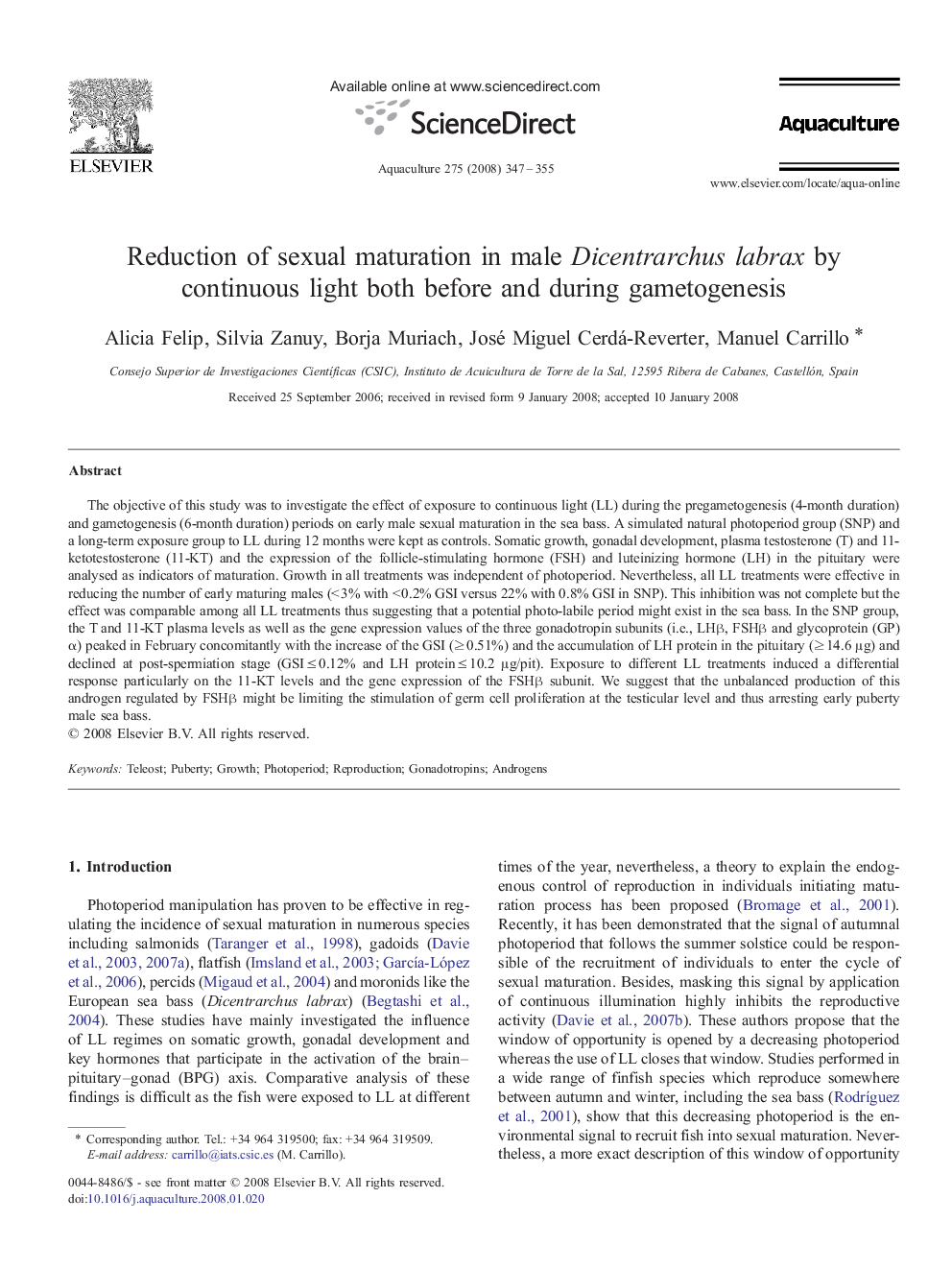| Article ID | Journal | Published Year | Pages | File Type |
|---|---|---|---|---|
| 2424878 | Aquaculture | 2008 | 9 Pages |
The objective of this study was to investigate the effect of exposure to continuous light (LL) during the pregametogenesis (4-month duration) and gametogenesis (6-month duration) periods on early male sexual maturation in the sea bass. A simulated natural photoperiod group (SNP) and a long-term exposure group to LL during 12 months were kept as controls. Somatic growth, gonadal development, plasma testosterone (T) and 11-ketotestosterone (11-KT) and the expression of the follicle-stimulating hormone (FSH) and luteinizing hormone (LH) in the pituitary were analysed as indicators of maturation. Growth in all treatments was independent of photoperiod. Nevertheless, all LL treatments were effective in reducing the number of early maturing males (< 3% with < 0.2% GSI versus 22% with 0.8% GSI in SNP). This inhibition was not complete but the effect was comparable among all LL treatments thus suggesting that a potential photo-labile period might exist in the sea bass. In the SNP group, the T and 11-KT plasma levels as well as the gene expression values of the three gonadotropin subunits (i.e., LHβ, FSHβ and glycoprotein (GP) α) peaked in February concomitantly with the increase of the GSI (≥ 0.51%) and the accumulation of LH protein in the pituitary (≥ 14.6 μg) and declined at post-spermiation stage (GSI ≤ 0.12% and LH protein ≤ 10.2 μg/pit). Exposure to different LL treatments induced a differential response particularly on the 11-KT levels and the gene expression of the FSHβ subunit. We suggest that the unbalanced production of this androgen regulated by FSHβ might be limiting the stimulation of germ cell proliferation at the testicular level and thus arresting early puberty male sea bass.
